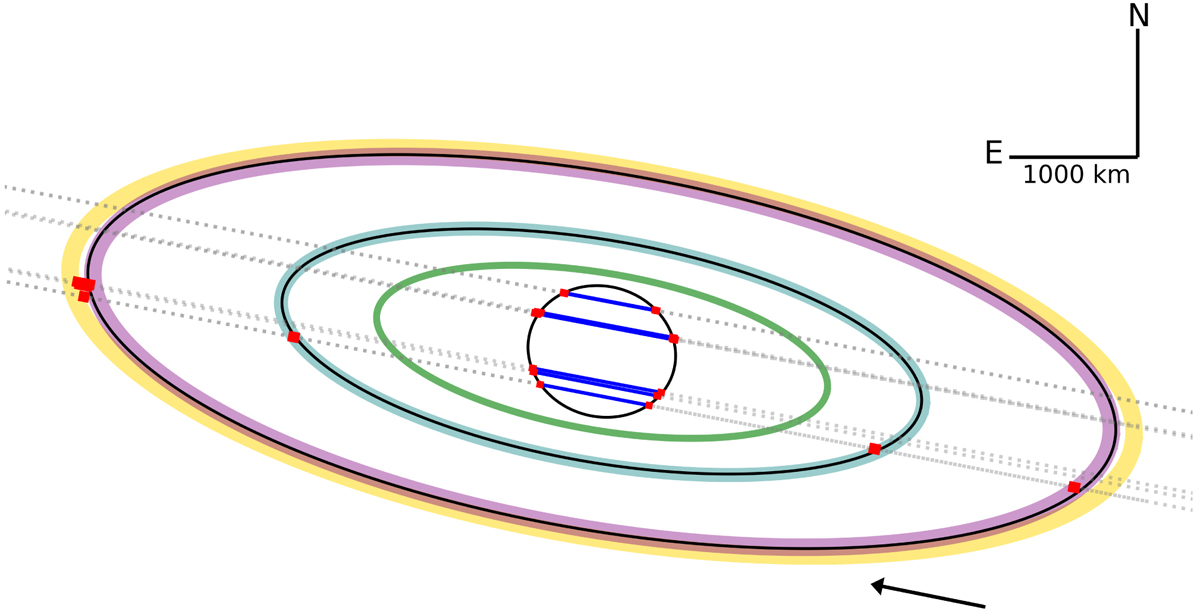Fig. 1.

Download original image
Representation of our results on Quaoar’s shape (center) and the detection of the two rings Q1R (outer ring) and Q2R (inner ring). The red segments correspond to the 1-σ error bars on the particular events. The orbit of Q1R is determined from a simultaneous fit using the present work and previous detections of 2018, 2019, 2020, and 2021 reported by Morgado et al. (2023) (see Sect. 4.2). The solution for the orbit of the new Q2R ring assumes that this ring is co-planar and concentric with Q1R. The central part of the plot (occultation by the solid body) is enlarged in Fig. A.2. In yellow, we show the 1/3 SOR resonance with Quaoar, and in teal is the 5/7 SOR resonance (considering the double-peaked rotation period). The purple ellipse represents 6/1 MMR with Weywot, and the green ellipse presents the expected Roche limit, considering particles with a bulk density of ρ = 0.4 g cm−3. The arrow shows the star’s motion relative to Quaoar. Note: the orbital radius of Weywot is about three times larger than that of Q1R, and thus it is not shown in this representation.
Current usage metrics show cumulative count of Article Views (full-text article views including HTML views, PDF and ePub downloads, according to the available data) and Abstracts Views on Vision4Press platform.
Data correspond to usage on the plateform after 2015. The current usage metrics is available 48-96 hours after online publication and is updated daily on week days.
Initial download of the metrics may take a while.


